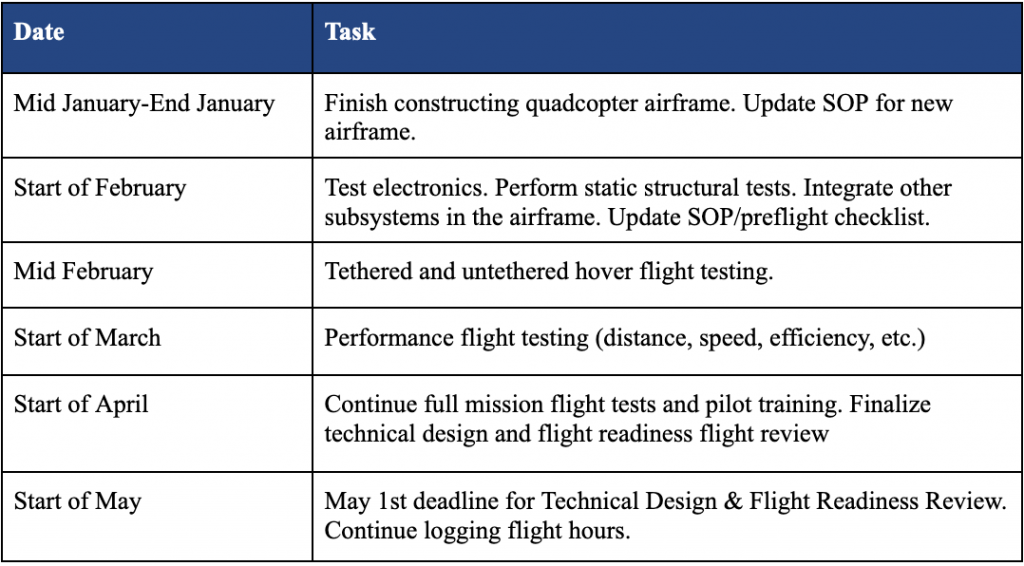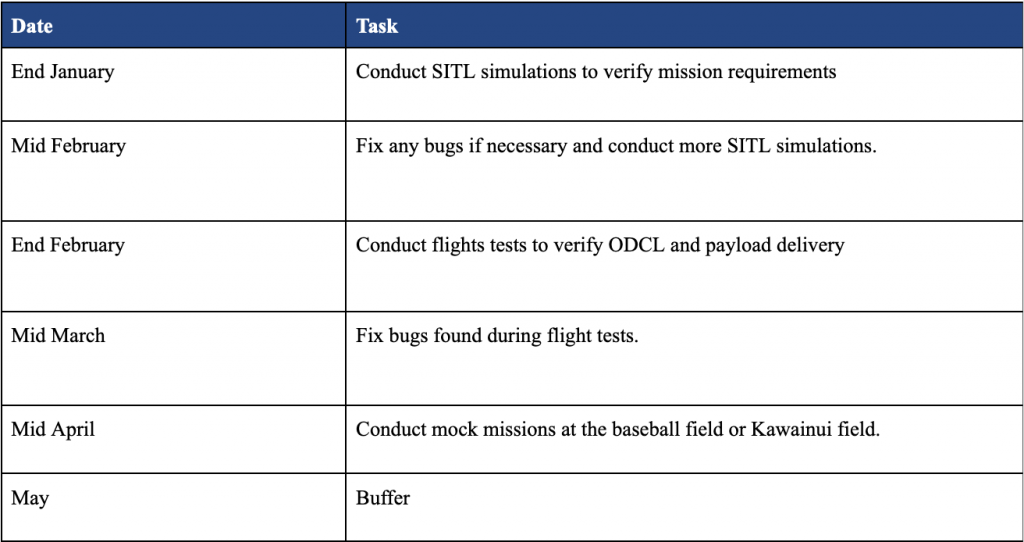Problem
The market for commercial UAVs has seen a meteoric rise in the past few years. According to Allied research markets, the global commercial drone market was valued at around $2.145 billion in 2015 and projected to be around $10.73 billion in 2021 [1]. This shows that UAVs will most likely be an integral part of everyday life in the near future. Currently, autonomous UAVs are often applied in the inspection of agriculture or certain industries, such as oil, because UAVs are time and money efficient. For example, hiring a helicopter crew to inspect oil pipes may be more costly than using drones. In addition, a UAV could inspect agriculture faster and more accurately than planes or satellites [2].
Air delivery is an emerging use of autonomous UAVs. To illustrate this, a company called Zipline develops UAVs to deliver blood and vaccines to hospitals in Rwanda who are in desperate need of such supplies [3]. Since blood has a short shelf life, finding a fast means of delivery is vital which a UAV has proven to accomplish [4]. UAVs are also favorable since it would normally be difficult to transport this blood through normal means, given how far Rwanda is from the coastline. In addition, Uber Eats is developing a VTOL drone to shorten food-delivery time to eight minutes. The company is set to test this UAV in 2020 [5].
Yet, there are many challenges in using an autonomous UAV for delivery. For example, one needs to be mindful of payload and battery capacity as there
would be dire consequences if the UAV were to lose power and crash, such as property damage, human injury or death, as well as customer dissatisfaction for not getting the delivery. Unfortunately, these aspects of delivery UAVs have been relatively neglected [6]. In particular, the Uber Eats’ VTOL drone can only fly up to 18 miles and carry meals for up to two people[5]. In addition to payload and battery capacity concerns, UAVs must also be able to adapt to the urban environment, avoid buildings, and safely deliver their package. For example, UAV payload delivery to a house requires accuracy so that it reaches the intended recipient’s target location while avoiding surrounding obstacles.
UHDT plans to address these shortcomings faced by companies in UAS development by developing a UAV to accomplish short and long term goals. The short term goals will last the span of the 2022/2023 school year and include constructing a new quadcopter to improve mission efficiency. These tasks include designing a new Air Delivery box, more accurately identifying and locating targets, improving the reliability of the payload-deployment method, and optimizing the UAV for longer flight duration. This UAV will be integrated with the Image Processing (IP) and Air Delivery (AD) subsystems to create the 2023 UAS. The long term goal of UHDT is to design and manufacture an efficient and robost quadcopter that would serve as the UAV in UHDT’s 2023 UAS design and could potentially be passed down to future teams.








